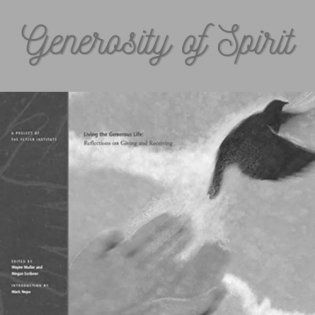Sufi Folktales
Through the three Suni folktales, learners analyze the lessons in generosity and behavior for the common good.
The learner will:
- identify the historical and geographic settings of folktales.
- identify the message and connections to philanthropy.
Youth access to these folktales (Learning to Give has permission to make these folktales available online to readers):
Family members share instances when they learned a hard lesson through life’s experiences and discuss whether they could have learned that lesson just as well through a story instead.
- "Mullah’s Miracle." Daenecke, Eric. Tales of Mullah Nasir-ud-Din: Persian Wit, Wisdom and Folly. New York: Exposition Press, ©1960. p. 31.
- "Mullah in the Turkish Bath." Daenecke, Eric. Tales of Mullah Nasir-ud-Din: Persian Wit, Wisdom and Folly. New York: Exposition Press, ©1960. p. 29.
- "Three Fridays." Yashinsky, Dan (collected by). Tales for an Unknown City: Stories from One Thousand and One Friday Nights of Storytelling, Montreal and Kingston: McGill-Queen’s University Press, ©1990. Pp. 15-17. Used with the permission of Celia Lottridge.
Instructions
Anticipatory Set:
Define the term mullah as a community leader in some Muslim cultures. Explain that today’s stories are all about Mullah Nasruddin, a familiar figure in folktales around the world, sometimes described as the wise fool.
Two of the folktales are Sufi folktales from Persia (modern Iran). On a map, locate Iran’s absolute location (longitude and latitude) and relative location (general descriptors of where the place is located). Describe Iran's physical characteristics and human characteristics.
Explain that all of the folktales involve the Mullah Nasruddin whose stories are told to increase understanding of things that can be difficult to fathom. Sometimes the mullah is wise, and at another time he is ridiculous. Nevertheless, his stories are known all over the world.
Assign the three folktales to three small groups in which they discuss the message and connection to philanthropy in their story.
- "Mullah in the Turkish Bath" explores motivations for giving or serving. Discuss the motivations of the attendants to give good service. Will the Mullah’s actions ensure better service in the future or provoke hostility? How is the lesson applicable to modern society?
- "Mullah’s Miracle" is a more difficult story to understand. Since he knew that the tree would not move to him, was there a "miracle" that occurred in the story? What does the Mullah want the listener to learn from the story?
- "Three Fridays" at first appears to be a story about a Mullah who finds a way to get out of doing his duty three weeks in a row. What was the lesson that the Mullah taught all those people who flocked to hear him? How effective was this technique for teaching his lesson? Do people today learn from those around them as much or more than from great teachers?
Which of the following character traits (caring, courage, civic virtue and citizenship, giving, honesty, justice and fairness, perseverance, respect, responsibility, trustworthiness) were exhibited by the Mullah in the three stories? Give examples of where these occurred. Was there a "generosity of the spirit" exhibited in these stories?
Although the folktales reflect Sufi culture, what in the stories has universal appeal?
Philanthropy Framework
-
Strand PHIL.III Philanthropy and the Individual
-
Standard PI 01. Reasons for Individual Philanthropy
-
Benchmark HS.1 Define and give examples of motivations for giving and serving.
-
-
